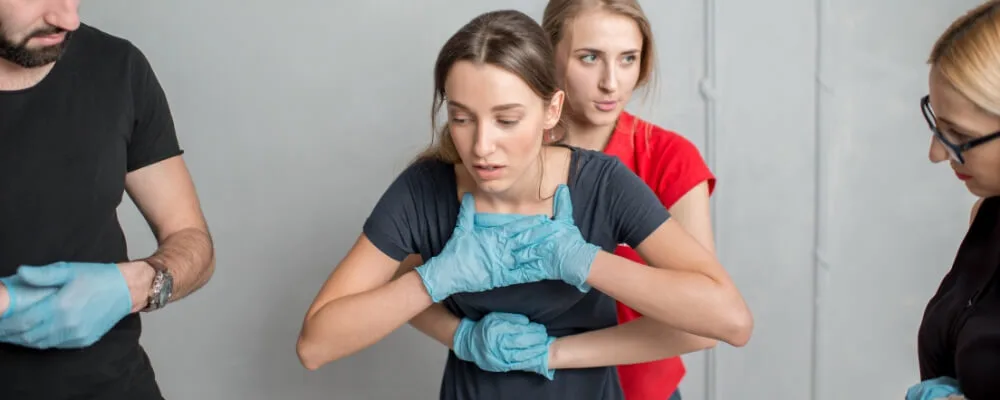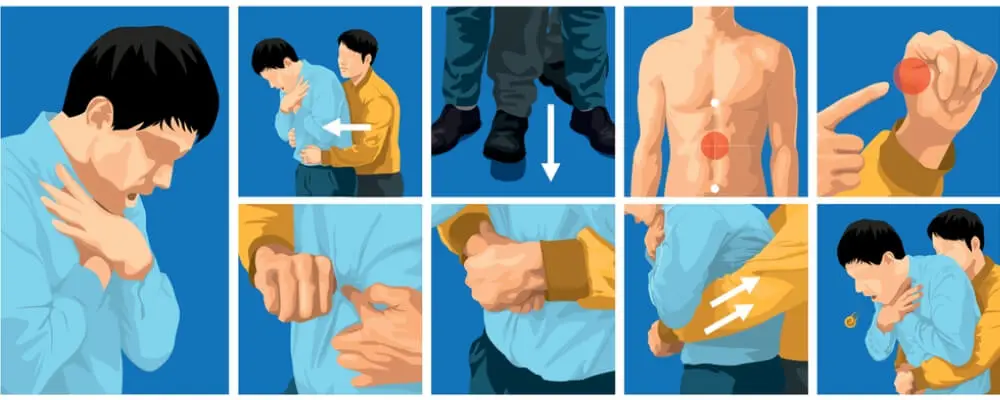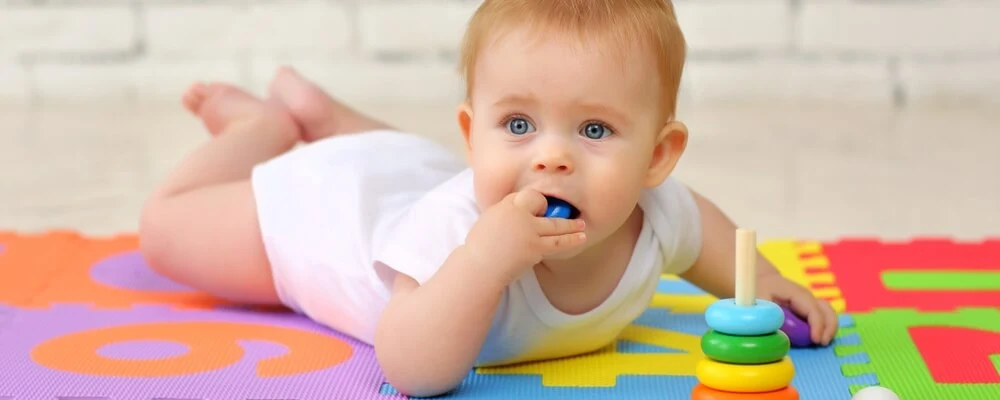Understanding, managing, and preventing choking hazards is paramount, especially given that choking is a significant cause of accidental deaths, particularly among young children. This blog will closely examine what constitutes a choking hazard, how to discern when someone is genuinely choking, and the crucial steps to take in such circumstances.
We’ll shed light on the Heimlich Maneuver – a life-saving technique anyone can use in an emergency. However, we firmly believe that prevention surpasses cure. To that end, we’ll detail practical strategies to avert choking incidents from happening in the first place.
From fostering mindful eating habits to ensuring a child-safe environment, we’ll provide tips to protect your loved ones from the hidden perils of everyday life. It’s rightly said that knowledge is power; in this instance, it could be life-saving. So, join us on this essential journey of understanding and tackling choking hazards and learning how to manage and prevent them.

Choking Hazard
Choking hazards are materials or objects that, if ingested or inhaled, can obstruct a person’s airway, impairing their ability to breathe. This definition includes food and any small, hard object that could be swallowed or inhaled, such as a toy part, a piece of a household item, or even a glob of slime or dough.
The anatomy of the human airway makes it possible for these objects to become lodged in the throat or windpipe. The windpipe (trachea) is a tube that carries air in and out of the lungs, and it is located just in front of the food pipe (esophagus), which carries food and liquid to the stomach. When we swallow, a small flap of tissue called the epiglottis closes over the windpipe to prevent food and liquid from entering the lungs. But if someone tries to swallow too large a piece of food or a non-food object or inhales a small object while breathing, the object can become stuck in the windpipe and block the airflow, leading to choking.
Choking is particularly dangerous for children under 5 years old. Their airways are smaller, they often explore by putting objects in their mouths, and they may not fully develop the physical coordination to chew and swallow food effectively. This combination of factors makes them more susceptible to choking. If an object blocks a child’s airway and it’s not removed quickly, the lack of oxygen can cause serious harm or even be fatal. That’s why understanding and mitigating choking hazards is crucial to child safety.

How to Manage Choking
If someone is choking, it’s crucial to act quickly. Here are steps to follow for the Heimlich Maneuver, a common method used to assist a choking victim:
1. Assess the situation
It’s crucial to identify whether someone is really choking or just having a coughing fit. When someone is choking, their airway is partially or completely blocked, inhibiting breathing. Symptoms of choking include inability to talk, difficulty or noisy breathing, wheezing, inability to cough forcefully, clutching at the throat, and turning blue or reddish. An effective cough can often dislodge the object. However, if the person’s cough is weak or non-existent, the airway is completely blocked, and immediate action is required.
2. Call for help
When you’ve identified that someone is choking, calling for emergency medical help is essential. Dial your country’s emergency number (e.g., 911 in the US) or instruct someone nearby to do so. The person might need medical attention even after the object has been dislodged. If you’re alone with the choking individual, your primary focus should be to clear the airway first, then call emergency services as soon as possible.
3. Perform the Heimlich Maneuver
The Heimlich Maneuver is designed to force air out of the lungs and push the object out from behind. To perform it, stand behind the person who’s choking. Place your arms around their waist and bend them slightly forward. Clasp your hands together in a fist and place it, thumb side in, just above the person’s navel (but below the breastbone). Grab your fist with your other hand and make a quick, inward, and upward thrust. Be careful not to press against the person’s ribcage or lower rib area to avoid causing injury.
Self-Heimlich: If you're alone and choking, you can perform the Heimlich maneuver on yourself. Place your own fist above your navel and use your other hand to grasp it. Bend over a hard surface, such as a countertop or chair, and thrust your fist inward and upward.
4. Keep going
If the first Heimlich Maneuver thrust doesn’t dislodge the object, repeat it. Do this until the object is forced out, the person can breathe or cough forcefully or becomes unconscious. If the person loses consciousness, you must start cardiopulmonary resuscitation (CPR) with chest compressions and rescue breaths.
Remember, after the choking episode, the person should still seek medical attention. Even if the person seems fine, complications can arise. For example, the object might have caused some internal injury, or part of it might still be lodged inside. A medical professional should check them over to ensure everything is indeed okay.
How to Prevent Choking
Preventing choking primarily involves ensuring that potential choking hazards are kept out of reach, especially for children. Here are some strategies:
1. Mindful Eating
Instilling good eating habits in children from a young age is crucial. This includes sitting down while eating, not rushing meals, and thoroughly chewing and swallowing food before speaking or laughing. Eating while running, playing, or doing other physical activities can increase the risk of choking, as the airway must handle food and large amounts of air. Encourage children to take small bites, eat slowly, and focus on their meals during meals to minimize these risks.
2. Appropriate Food Size
Children, especially those under four, are still learning to chew and swallow properly. Large chunks of food can easily become lodged in their small throats. Foods like hot dogs, whole grapes, large pieces of meat or cheese, whole nuts, hard candies, and marshmallows should be cut into smaller, bite-sized pieces for young children. As a rule, food should be cut into pieces no larger than a half-inch.
3. Toy Safety
Many toys, especially those intended for older children, contain small parts that can be a choking hazard for younger children. Always pay attention to the age guidelines on a toy’s packaging. These guidelines take choking hazards into account. Regularly inspect children’s toys to ensure no loose or broken parts. When deflated or popped, products like balloons can also pose a risk and should be kept out of reach.
4. Keep Dangerous Items Out of Reach
Many household items that adults take for granted can be hazardous to children. Items such as coins, batteries, marbles, pen or marker caps, and small homewares should be stored securely out of reach of children. Remember that children can be surprisingly inventive when climbing furniture or accessing seemingly secure locations, so it’s crucial to regularly review your home for potential hazards.

5. Learning Basic Life-Saving Skills
Knowing what to do is one of the most effective ways to prevent a choking incident from turning deadly. This includes learning the Heimlich maneuver and cardiopulmonary resuscitation (CPR). Many organizations, including the American Red Cross and the American Heart Association, offer training in these lifesaving techniques. Online resources can also provide initial guidance, but hands-on training is best. Additionally, learning the signs of choking can help you act quickly and effectively in an emergency.
Remember, the best way to deal with choking is to prevent it. Following these guidelines and being vigilant about potential choking hazards can significantly reduce the risk of a choking incident.
Conclusion
In conclusion, choking hazards pose a significant risk, particularly to young children, and being prepared is our best defense. Understanding what constitutes a choking hazard, recognizing the signs of choking, and knowing how to respond in such emergencies with techniques like the Heimlich Maneuver, can make the difference between life and death.
Equally important is implementing preventative measures like mindful eating, safe food preparation, prudent toy selection, and keeping small objects out of reach to minimize the chances of a choking incident. We can create safer environments for ourselves and our loved ones through continuous awareness, vigilance, and training in lifesaving skills.

